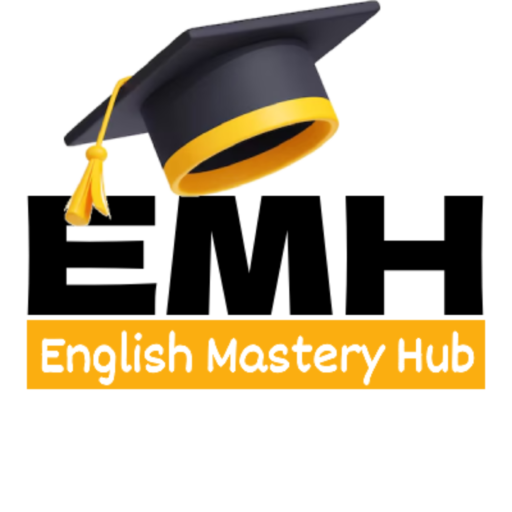
Learning in the Age of Distraction: Can Education Compete?
Article Level: B1-B2
Explanation: This article explains how modern technology creates distractions for students and challenges education. It highlights ways schools, teachers, and parents can use technology wisely to keep students focused and improve learning.
Commonly Used Words from the Article
-
Distraction /dɪˈstrækʃən/ (noun): Something that takes your attention away from what you are doing.
Social media is a major distraction for many students. -
Focus /ˈfəʊkəs/ (verb): To give full attention to something.
It is difficult to focus when your phone keeps buzzing. -
Engage /ɪnˈɡeɪdʒ/ (verb): To interest or involve someone in an activity.
Games and quizzes help engage students in lessons. -
Encourage /ɪnˈkʌrɪdʒ/ (verb): To give someone support or confidence.
Teachers encourage students to manage their screen time. -
Platform /ˈplætfɔːm/ (noun): A type of technology or software used for a purpose.
The school uses an online platform for homework and lessons.
Audio File of the Article
Read more: Learning in the Age of Distraction: Can Education Compete?

Learning in the Age of Distraction: Can Education Compete?
In today’s world, students are surrounded by more distractions than ever before. Mobile phones, social media, video games, and constant online notifications compete for their attention. While technology has made learning easier and more accessible, it has also made it harder for students to stay focused. This raises an important question: Can education compete in the age of distraction?
To begin with, it is important to understand why distractions are so powerful. Many digital platforms are designed to keep users online for as long as possible. Colourful visuals, instant messages, and short videos give quick pleasure and excitement. As a result, students can easily lose concentration, especially during lessons that require deep thinking. Instead of reading a book or listening to a teacher, students may feel tempted to check their phones again and again.
However, education does not need to fight technology; instead, it can use it in smarter ways. Many schools and teachers are now including digital tools in the classroom. Interactive apps, online quizzes, educational videos, and virtual learning platforms can make lessons more engaging. When students are actively involved, they are less likely to become distracted. Technology, when used correctly, can help students learn faster and remember information more effectively.
Another essential step is teaching students how to manage their own attention. Time-management skills, digital discipline, and healthy study habits are important for the modern learner. For example, teachers can encourage students to turn off notifications during study time or use the “Do Not Disturb” function. Parents also play a role by setting limits on screen time and helping children create a quiet study space at home.
Schools can also focus on improving classroom environments. Shorter activities, group discussions, and project-based learning make learning more active and enjoyable. When students feel connected to the lesson, their minds are less likely to wander. Many educators now understand that long lectures no longer match the way young people learn today. Instead, students need variety, movement, and opportunities to participate.
Finally, emotional well-being must not be ignored. Stress, lack of sleep, and anxiety can make distractions worse. Schools that support mental health, promote balance, and encourage physical activity help students stay focused and motivated.
In conclusion, education can still compete in the age of distraction, but only if it adapts. Technology is not the enemy; the real challenge is learning to use it wisely. By creating engaging lessons, teaching digital responsibility, and supporting students’ well-being, schools can help young people succeed in a busy, connected world.

Grammar Notes
-
-
Present Simple: To describe facts and current realities.
-
Modal Verbs (can, must, should): To show ability, advice, and necessity.
-
Linking Words: However, instead, in conclusion.
Mini Grammar Lesson: Using Modal Verbs for Advice and Possibility
-
Should is used to give advice.
-
Example: Students should turn off notifications during study time.
-
-
Can is used to show ability or possibility.
-
Example: Technology can make lessons more interesting.
-
-
Must expresses strong necessity.
-
Example: Schools must support students’ well-being.
-
-
Join Our FREE English Grammar Course and improve your grammar skills!

Five Questions Based on the Article
-
-
-
Why do many students find it difficult to stay focused in today’s world?
-
How can technology make learning more engaging for students?
-
What are two strategies students can use to reduce digital distractions?
-
Why are long lectures becoming less effective for modern learners?
-
What role do parents play in helping students manage distractions?
-
-
Join Our FREE Weekly English-speaking Class and improve your speaking skills!

We’d love to hear your thoughts! Join the conversation by leaving a comment below. Sharing your insights, questions, or experiences can help you connect with others in our English learning community. It’s a great way to practice your English skills, engage with like-minded individuals, and improve together. Don’t be shy—jump in and let’s keep the discussion going!

 EnglishMasteryHub
EnglishMasteryHub